Carbon Peak Control Strategies and Pathway Selection in Dalian City: A Hybrid Approach with STIRPAT and GA-BP Neural Networks
Abstract
:1. Introduction
2. Literature Review
3. Materials and Methods
3.1. Research Methodology
3.1.1. The STIRPAT Model
3.1.2. GA-BP Model
- (1)
- Individual coding and population initialization; the form of entity coding is used for individuals, and the population individual consists of weights and thresholds between the input layer, the implicit layer, and the output layer of the BP network. The coding length is calculated as follows:where n, l, and m are the number of neuron nodes in the input, hidden, and output layers of the BP network, respectively.
- (2)
- Selection of the fitness function of the training population: the individuals in the population are evaluated by the fitness function. In this paper, the fitness function is selected as the error of the BP neural network training:
- (3)
- Selection process: Initially, the individual with the highest fitness value in the population is selected, and its structure is duplicated through calculation into the population. Individuals with lower fitness values undergo crossover and mutation operations, resulting in new chromosomes that are then re-evaluated for fitness and sorted accordingly. This study adopts the roulette wheel method for selection [41]:
- (4)
- Crossover operation: In this paper, arithmetic crossover is used to linearly recombine the population. Assuming linear recombination between Xi and Xj, the new individual generated by arithmetic crossover for a pair of individuals of that population species is as follows:
- (5)
- Mutation operation: To make each gene a mutation point, the j-th gene of the i-th individual is selected and the corresponding mutation operation is performed on it; the specific mutation operation is shown as follows.where is the gene , the upper limit of the value of is the lower limit of the value of gene ; is the current iteration number; is a random number between [0,1]; is the maximum evolution number.
- (6)
- Iterative optimization search: Based on the specified number of iterations, steps 2–5 are executed iteratively, with each cycle referred to as population evolution. The most optimal individuals that meet the requirements are then transformed into the initial weights and thresholds of the BP neural network.
- (7)
- Training and prediction with BP neural networks: the optimal weights and thresholds obtained from the previous operations are applied to the neural networks to initiate the BP neural network training process and to predict data using the successfully trained models.
3.2. Study Area and Data Sources
3.2.1. Overview of the Study Area
3.2.2. Data Sources and Processing
- (1)
- Data sources (Table 4):
- (2)
- Data processing
4. Analysis of the Results of the Study
4.1. Driver Analysis
4.2. GA-BP Neural Network Training and Prediction
4.2.1. Network Training
4.2.2. Prediction of the Network
5. Discussion
6. Research Conclusions
- (1)
- The main positive drivers of carbon emissions in Dalian, ranked by significance, are energy intensity, value added from the tertiary industry, number of residents, and gross regional product, with impact factors of 0.820, 0.417, 0.362, and 0.173, respectively. Conversely, population density acts as a mitigating factor, with an impact coefficient of −0.180.
- (2)
- Across the districts and counties of Dalian, the economic scale negatively impacts carbon emission reductions in Zhongshan District, Xigang District, and Shahekou District. Similarly, energy intensity negatively affects Ganjingzi District, Lushunkou District, Jinzhou District, Pulandian District, Changhai County, Wafangdian City, and Zhuanghe City. Additionally, population scale exerts a negative influence on Shahekou District, Changhai County, Wafangdian City, and Zhuanghe City.
- (3)
- The low-carbon scenario represents a pathway that optimally balances economic and environmental development in the Dalian City region. According to projections, peak carbon emissions are expected to occur in 2033, reaching a maximum of 191.79 million tons.
7. Policy Recommendations
8. The Limitations
Author Contributions
Funding
Institutional Review Board Statement
Informed Consent Statement
Data Availability Statement
Conflicts of Interest
References
- Han, F.; Xie, R.; Lu, Y.; Fang, J.Y.; Liu, Y. The effects of urban agglomeration economies on carbon emissions: Evidence from Chinese cities. J. Clean. Prod. 2018, 172, 1096–1110. [Google Scholar] [CrossRef]
- Wang, X.P.; Feng, Q.; Song, J.C. The spatial association structure evolution of carbon emissions in Chengdu-Chongqing urban agglomeration and its influence mechanism. China Environ. Sci. 2020, 40, 4123–4134. [Google Scholar]
- Matthews, H.D.; Wynes, S. Current global efforts are insufficient to limit warming to 1.5 °C. Science 2022, 376, 1404–1409. [Google Scholar] [CrossRef]
- Zhang, G.M.; Wang, T.; Lou, Y.Y.; Guang, Z.C.; Zheng, H.J.; Li, Q.; Wu, J.Q. Research on China’s Provincial Carbon Emission Peak Path Based on a LSTM Neural. Chin. J. Manag. Sci. 2022, 32, 1–12. [Google Scholar]
- Pang, D.; Li, N.; Li, F.; Feng, K.S.; Peng, L.L.; Wang, Z. Mitigation strategy of Eastern China based on energy-source carbon emission estimation. Acta Sci. Circumstantiae 2021, 41, 1142–1152. [Google Scholar]
- Li, X.P.; Sun, S.P.; Zhang, Y.S.; Zhu, X. Carbon emission prediction and carbon peak path analysis in Fujian Province. Resour. Dev. Mark. 2023, 39, 139–147. [Google Scholar]
- Liu, J.H.; Wang, J.; Ding, X.Y.; Shao, W.W.; Mei, C.; Li, Z.J.; Wang, K.B. Assessing the mitigation of greenhouse gas emissions from a green infrastructure-based urban drainage system. Appl. Energy 2020, 278, 115686. [Google Scholar] [CrossRef]
- Guo, Q.; Ma, Y. Calculation Analysis of Carbon Emission Reduction for Sludge Treatment and Disposal Processes based on Mass Balance Approach. Water Purif. Technol. 2019, 38, 107–111. [Google Scholar]
- Jeonghwan, K.; BeomKeun, S.; Taehyoung, L.; Jongho, K.; Saewung, K.; GwiNam, B.; Gangwoong, L. Airborne estimation of SO2 emissions rates from a coal-fired power plant using two top-down methods: A mass balance model and Gaussian footprint approach. Sci. Total Environ. 2022, 855, 158826. [Google Scholar]
- Wang, M.; Zhou, Z.X.; Feng, M.M.; She, G.J.; Sun, R.Y. Online CO2 emission monitoring system for coal-fired power plant based on direct measurement and its accuracy verification. Coal Chem. Ind. 2022, 50, 18–21+33. [Google Scholar]
- Doll, H.C.; Muller, J.; Elvidge, D.C. Night-time Imagery as a Tool for Global Mapping of Socioeconomic Parameters and Greenhouse Gas Emissions. AMBIO J. Hum. Environ. 2000, 29, 157–162. [Google Scholar] [CrossRef]
- Rao, Y.C.; Wang, X.L.; Li, H.K. Forecasting electricity consumption in China’s Pearl River Delta urban agglomeration under the optimal economic growth path with low-carbon goals: Based on data of NPP-VIIRS-like nighttime light. Energy 2024, 294, 130970. [Google Scholar] [CrossRef]
- Zheng, Y.M.; Fan, M.L.; Cai, Y.L.; Fu, M.Z.; Yang, K.X.; Wei, C.Y. Spatio-temporal pattern evolution of carbon emissions at the city-county-town scale in Fujian Province based on DMSP/OLS and NPP/VIIRS nighttime light data. J. Clean. Prod. 2024, 442, 140958. [Google Scholar] [CrossRef]
- Sun, J.Y.; Qi, Y.B.; Guo, J.W.; Zheng, J.L.; Zhang, L.H.; Yang, X.Y. Impact of nighttime light data saturation correction on the application of carbon emissions spatialization: A comparative study of the correction effect and application effect based on five methods in China. J. Clean. Prod. 2024, 438, 140815. [Google Scholar] [CrossRef]
- Li, D.; Han, P.Y.; Li, K.X.; Di, Q.B.; Duan, Y. A Study on the Impact of Urbanization Level on Carbon Emissions Based on the STIRPAT Model: A Case Study of Five Major Urban Agglomerations in Northern China. Sustainability 2024, 16, 6134. [Google Scholar] [CrossRef]
- Wang, W.Y.; Wang, J.; Guo, F. Carbon Dioxide (CO2) Emission Reduction Potential in East and South Coastal China: Scenario Analysis Based on STIRPAT. Sustainability 2018, 10, 1836. [Google Scholar] [CrossRef]
- Han, N.; Luo, X.Y. Carbon emission peak prediction and reduction potential in Beijing-Tianjin-Hebei region from the perspective of multiple scenarios. J. Nat. Resour. 2022, 37, 1277–1288. [Google Scholar] [CrossRef]
- Wang, L.B.; Zhang, Y. Factors Decomposition and Scenario Prediction of Energy-Related CO2 Emissions in China. Electr. Power Constr. 2021, 42, 1–9. [Google Scholar]
- Zhang, H.; Li, S. Research on the Factors Influencing CO 2Emission Reduction in High-Energy-Consumption Industries under Carbon Peak. Sustainability 2023, 15, 13437. [Google Scholar] [CrossRef]
- Guan, Q. Decomposing and Decoupling the Energy-Related Carbon Emissions in the Beijing–Tianjin–Hebei Region Using the Extended LMDI and Tapio Index Model. Sustainability 2023, 15, 9681. [Google Scholar] [CrossRef]
- Nie, W.G.; Duan, H.M. A novel multivariable grey differential dynamic prediction model with new structures and its application to carbon emissions. Eng. Appl. Artif. Intell. 2023, 122, 106174. [Google Scholar] [CrossRef]
- Reham, A.; Yousef, A.N.; Arun, K.; Nirajan, S. Projection of Greenhouse Gas Emissions for the Road Transport Sector Based on Multivariate Regression and the Double Exponential Smoothing Model. Sustainability 2020, 12, 9152. [Google Scholar] [CrossRef]
- Li, B.; Ding, J.Q.; Yin, Z.Q.; Li, K.Y.; Zhao, X.; Zhang, L.X. Optimized neural network combined model based on the induced ordered weighted averaging operator for vegetable price forecasting. Expert Syst. Appl. 2020, 168, 114232. [Google Scholar] [CrossRef]
- Kgaugelo, R.M.; Khumbulani, M.; Tijani, O.A. Energy and Carbon Emission Efficiency Prediction: Applications in Future Transport Manufacturing. Energies 2021, 14, 8466. [Google Scholar] [CrossRef]
- Guo, X.; Fang, C. How does urbanization affect energy carbon emissions under the background of carbon neutrality? J. Environ. Manag. 2023, 327, 116878. [Google Scholar]
- Su, Z.L.; Yan, W.L.; Li, H.M.; Gao, L.Y.; Shou, W.Q.; Wu, J. Prediction of Agricultural Carbon Emission Based on Improved BP Neural Network with Optimized Sparrow Search Algorithm. Environ. Sci. 2024, 49, 1–15. [Google Scholar]
- Chen, Y.D.; Meng, H.; Li, M.K.; Zhang, H.L.; Zhang, C.; Liang, W.; Han, Y.; Ji, J. Transformer Carbon Emission Prediction Model Based on Support Vector Machine. Packging Eng. 2024, 45, 254–261. [Google Scholar]
- Vahid, A.; Mark, G. Day ahead carbon emission forecasting of the regional National Electricity Market using machine learning methods. Eng. Appl. Artif. Intell. 2023, 123, 106314. [Google Scholar]
- Wang, H.; Wei, Z.J.; Fang, T.; Xie, Q.J.; Li, R.; Fang, D.B. Carbon emissions prediction based on the GIOWA combination forecasting model: A case study of China. J. Clean. Prod. 2024, 445, 141340. [Google Scholar] [CrossRef]
- Yang, L.; Wang, M.; Li, L.P.; Yang, R.P. Prediction of carbon emissions of four provinces in the Yangtze River delta region based on STIRPAT model. J. Environ. Eng. Technol. 2024, 45, 1–13. [Google Scholar]
- Amira, R.; Han, H.; Abdelhak, A.; Ahmed, M.M. Energy use and energy-related carbon dioxide emissions drivers in Egypt’s economy: Focus on the agricultural sector with a structural decomposition analysis. Energy 2022, 258, 124821. [Google Scholar]
- Huang, Y.Z.; Matsumoto, K. Drivers of the change in carbon dioxide emissions under the progress of urbanization in 30 provinces in China: A decomposition analysis. J. Clean. Prod. 2021, 322, 129000. [Google Scholar] [CrossRef]
- Chen, J.Q.; Li, X.S.; Geng, Y.W.; Liu, X.C.; Li, G.L. Mechanism analysis and empirical research on urbanization and carbon emissions in China: Based on the perspective of economic development, population transfer, and urban expansion. J. Nat. Resour. 2024, 39, 1399–1417. [Google Scholar] [CrossRef]
- Quan, C.G.; Cheng, X.J.; Yu, S.S.; Xin, Y. Analysis on the influencing factors of carbon emission in China’s logistics industry based on LMDI method. Sci. Total Environ. 2020, 734, 138473. [Google Scholar] [CrossRef]
- Han, Y.; Ge, X.S. Spatial–Temporal Characteristics and Influencing Factors on Carbon Emissions from Land Use in Suzhou, the World’s Largest Industrial City in China. Sustainability 2023, 15, 13306. [Google Scholar] [CrossRef]
- Shao, Z.G.; Li, K.X.; Li, M.D. Research on driving factors and decoupling effect of carbon emissions in China’s transportation industry under the background of “dual carbon”. China Environ. Sci. 2024, 44, 1–13. [Google Scholar]
- Li, Z.Y.; Wang, X.Q. Analysis of the influencing factors of China’s coal life-cycle carbon emissions based on LMDI-LCA. Environ. Dev. Sustain. 2023, 26, 17383–17405. [Google Scholar] [CrossRef]
- Li, M.Y.; Gao, F.; Sun, B.X.; Liu, Y.; Gong, X.Z.; Nie, Z. Zero carbon-emission technology route construction and multifactor analysis of aluminum production in China. J. Clean. Prod. 2022, 370, 133535. [Google Scholar] [CrossRef]
- Ehrlich, P.R.; Holdrens, J.P. The Impact of Population Growth. Science 1971, 171, 1212–1217. [Google Scholar] [CrossRef]
- York, R.; Rosa, A.E.; Dietz, T. STIRPAT, IPAT and ImPACT: Analytic tools for unpacking the driving forces of environmental impacts. Ecol. Econ. 2003, 46, 351–365. [Google Scholar] [CrossRef]
- Tran, H.; Phan, G.T.T.; Do Quang, B.; Tran, V.P. Comparative evaluation of the performance of improved genetic algorithms and differential evolution for in-core fuel management of a research reactor. Nucl. Eng. Des. 2022, 398, 111953. [Google Scholar] [CrossRef]
- Zhang, Y.N.; Pan, J.H. Spatio-temporal simulation and differentiation pattern of carbon emissions in China based on DMSP/OLS nighttime light data. China Environ. Sci. 2019, 39, 1436–1446. [Google Scholar]
- Guo, A.J.; Zhang, Y.N.; Fang, Q.; Zhong, F.L. Economic network structure and spatial organization model in Gansu Province. Urban Probl. 2021, 3, 48–56. [Google Scholar]
- Li, X.; Li, D.; Xu, H.M.; Wu, C.Q. Intercalibration between DMSP/OLS and VIIRS night-time light images to evaluate city light dynamics of Syria’s major human settlement during Syrian Civil War. Int. J. Remote Sens. 2017, 38, 5934–5951. [Google Scholar] [CrossRef]
- Chen, J.D.; Liu, J.L.; Qi, J.; Gao, M.; Cheng, S.L.; Li, K.; Xu, C. City- and county-level spatio-temporal energy consumption and efficiency datasets for China from 1997 to 2017. Sci. Data 2022, 9, 101. [Google Scholar] [CrossRef]
- Vedeshin, L.A.; Shapovalov, D.A. The First Scientific and Technical Experiments in Space Earth Sciences (On the 60th Anniversary of Satellite Images of the Earth from Manned Spacecraft). Izv. Atmos. Ocean. Phys. 2023, 58, 1689–1692. [Google Scholar] [CrossRef]
- Zhang, B.; Wei, D.Q.; Ding, Y.; Jiang, H.T.; Yin, J. Research on Cities’ Carbon Emissions and Their Spatiotemporal Evolution Coupled with Nighttime Light Image and Land Use Data in the Pearl River Basin. Adv. Earth Sci. 2024, 39, 317–328. [Google Scholar]
- Elvidge, C.D.; Baugh, K.E.; Kihn, E.A. Mapping city lights with nighttime data from the DMSP operational linescan system. Photogrammetric. Eng. Remote Sens. 1997, 63, 727–734. [Google Scholar]
- Chang, J.B.; Fu, X.T.; Zheng, M.J.; Hao, S.Z. Temporal and Spatial Evolution and Prediction of Energy Consumption Carbon Emissions Based on Night Light Data in Shanxi Province. Environ. Sci. Technol. 2023, 46, 81–89. [Google Scholar]
- Guan, J.Y.; Li, D.; Wang, Y.F.; Wang, X.Y. DMSP-OLS and NPP-VIIRS night light image correction in China. Bull. Surv. Mapp. 2021, 67, 1–8. [Google Scholar]
- Zhao, M.; Hu, J.; Dai, J.; Li, L.F. The Accounting of CO2 Emissions Based on the Energy Balances. J. Ecol. Econ. 2012, 11, 30–32+157. [Google Scholar]
- Wang, M.W.; Che, Y.; Yang, K.; Wang, M.; Xiong, L.J.; Huang, Y.C. A local-scale low-carbon plan based on the STIRPAT model and the scenario method: The case of Minhang District, Shanghai, China. Energy Policy 2011, 39, 6981–6990. [Google Scholar] [CrossRef]
- Hu, H. Research on parallel iterative optimization based on BP neural network and genetic algorithm. Mech. Electron. 2019, 316, 28–34. [Google Scholar]
- Yu, Y.; Hoshyar, A.N.; Samali, B.; Zhang, G.; Rashidi, M.; Mohammadi, M. Corrosion and coating defect assessment of coal handling and preparation plants (CHPP) using an ensemble of deep convolutional neural networks and decision-level data fusion. Neural Comput. Appl. 2023, 35, 18697–18718. [Google Scholar] [CrossRef]
- Wang, L.; Yi, S.; Yu, Y.; Gao, C.; Samali, B. Automated ultrasonic-based diagnosis of concrete compressive damage amidst temperature variations utilizing deep learning. Mech. Syst. Signal Process. 2024, 221, 111719. [Google Scholar] [CrossRef]
- Yu, Y.; Zhang, C.; Xie, X.; Yousefi, A.M.; Zhang, G.; Li, J.; Samali, B. Compressive strength evaluation of cement-based materials in sulphate environment using optimized deep learning technology. Dev. Built Environ. 2023, 16, 100298. [Google Scholar] [CrossRef]
- Dou, Z.X.; Sun, Y.M.; Zhu, J.H.; Zhou, Z.J. The Evaluation Prediction System for Urban Advanced Manufacturing Development. Systems 2023, 11, 392. [Google Scholar] [CrossRef]
- Zhou, C.; Liu, W.L.; Lin, S.T.; Yan, J.N.; Wang, Y.Q. Spatial Effect of Urban Green Technology Innovation on Carbon Emissions in Yangtze River Economic Belt. Resour. Environ. Yangtze Basin 2024, 33, 1833–1843. [Google Scholar]
- Fei, T.T.; Ding, X.T.; Que, X.; Lin, J.; Lin, J.; Wang, Z.W.; Liu, J.F. Spatiotemporal Heterogeneity Analysis of Energy Carbon Emission Efficiency in China Based on the SBM-DEA and STWR Model. Environ. Eng. 2024, 43, 1–19. [Google Scholar]
- Song, Y.C.; Qin, S.; Jin, C.R. Regional Transport Carbon Emission Forecasting and Peak Carbon Pathway Planning in China. Environ. Sci. 2024, 49, 1–18. [Google Scholar]
- Liu, J.H.; Liu, Y.X.; Huang, L. Measurement and Driving Factor Analysis of Carbon Emissions from Tourism Transportation in East China. Res. Environ. Sci. 2024, 37, 626–636. [Google Scholar]
- Huang, W.X.; Gao, C.Z.; Wu, B.; Chen, T.; Yang, T.; Zhang, B. Development Path of Guangxi to Reach the Carbon Emission Peak Based on STIRPAT Model. Environ. Sci. 2024, 49, 1–25. [Google Scholar]
- Lin, L.Q.; Ma, T.Z. Prediction of carbon peak time of construction industry in Jiangxi Province based on STIRPAT model. Environ. Pollut. Control 2024, 46, 430–434+442. [Google Scholar]
- Ji, J.J.; She, D.L.; Alimu, A.B.L.T.; Pan, Y.C. Predicting Dissolved N2O Concentrations from Drainage Ditches in salt-affected farmlands Based on Optimized Backpropagation Neural Network. China Environ. Sci. 2024, 44, 1–10. [Google Scholar]
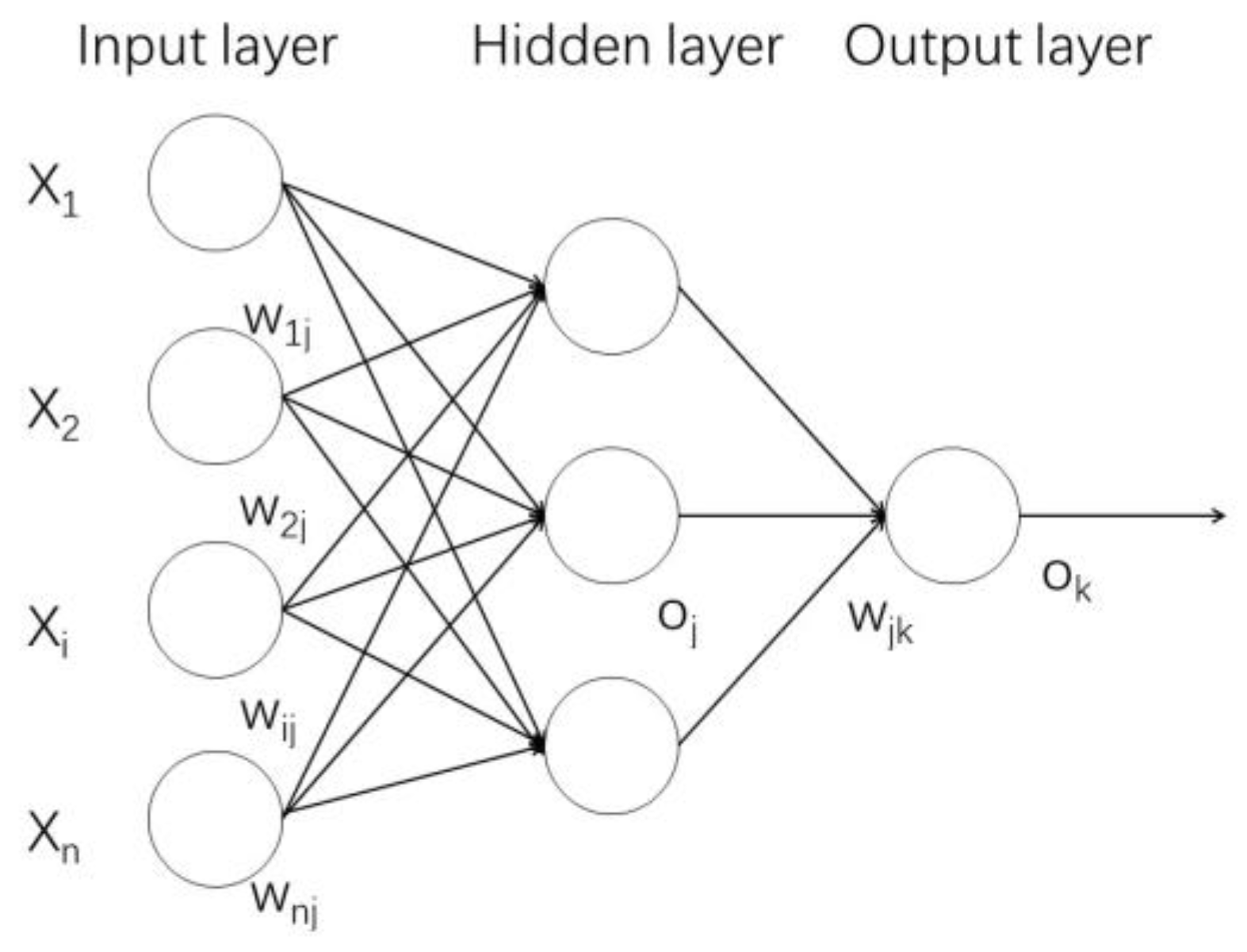
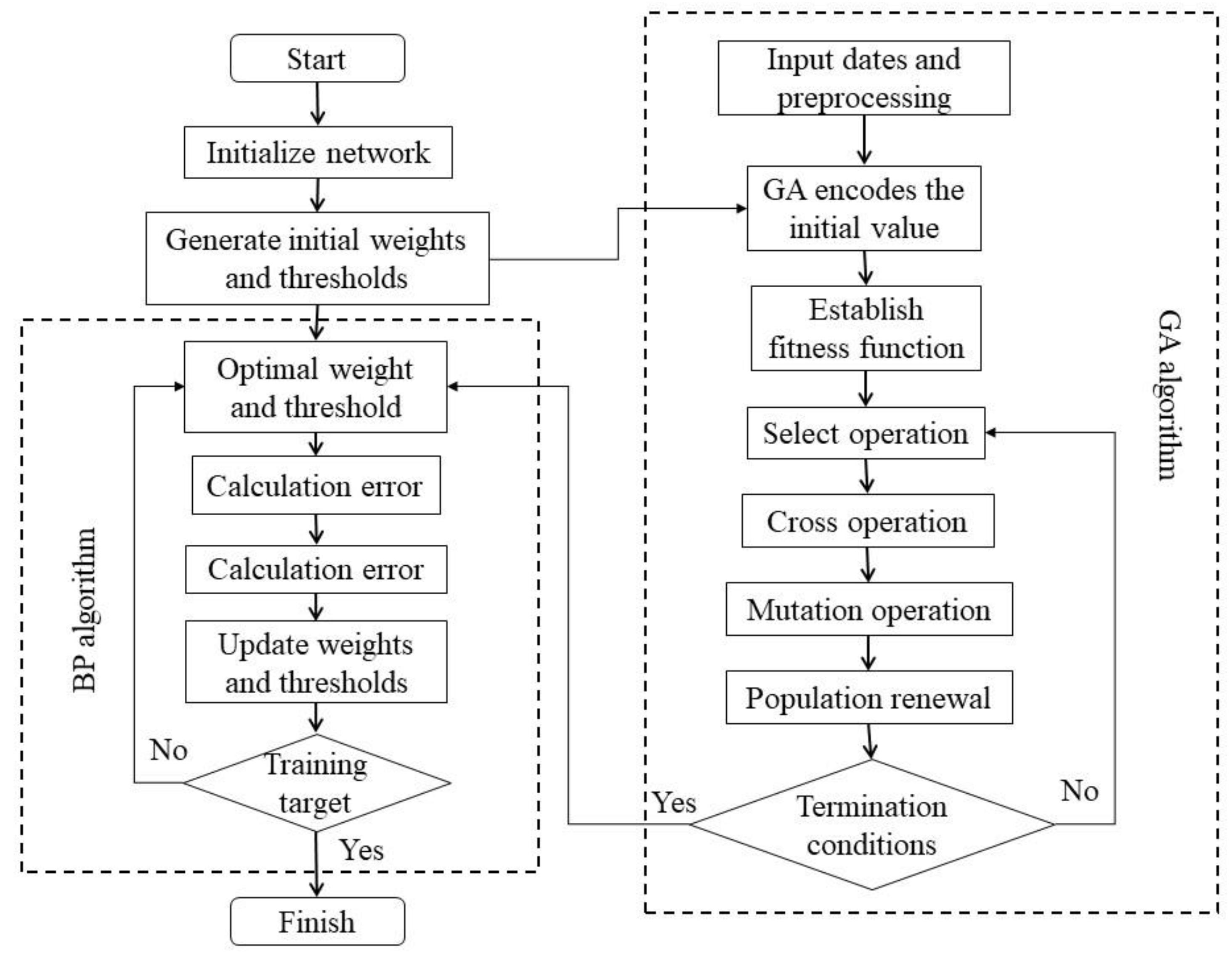


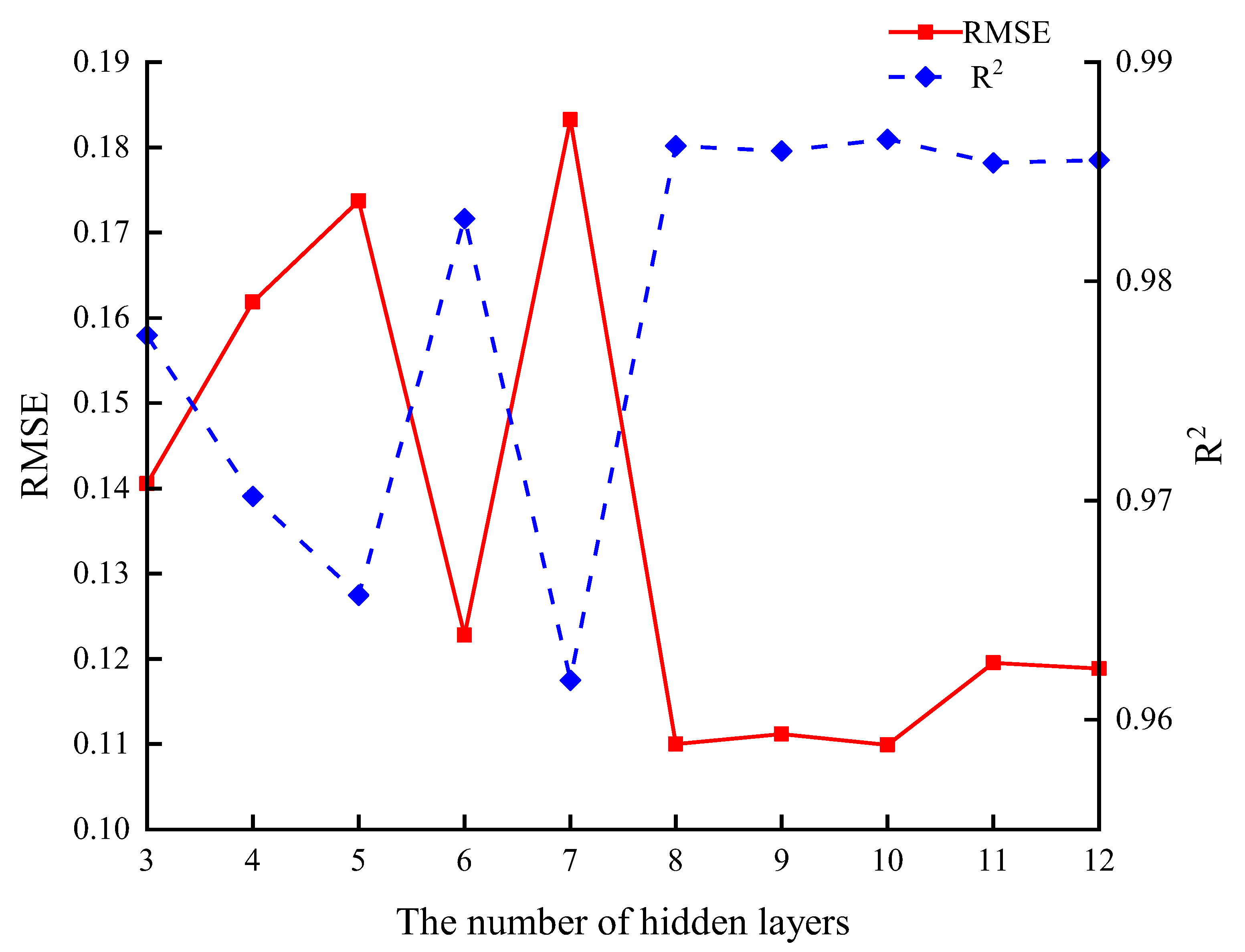

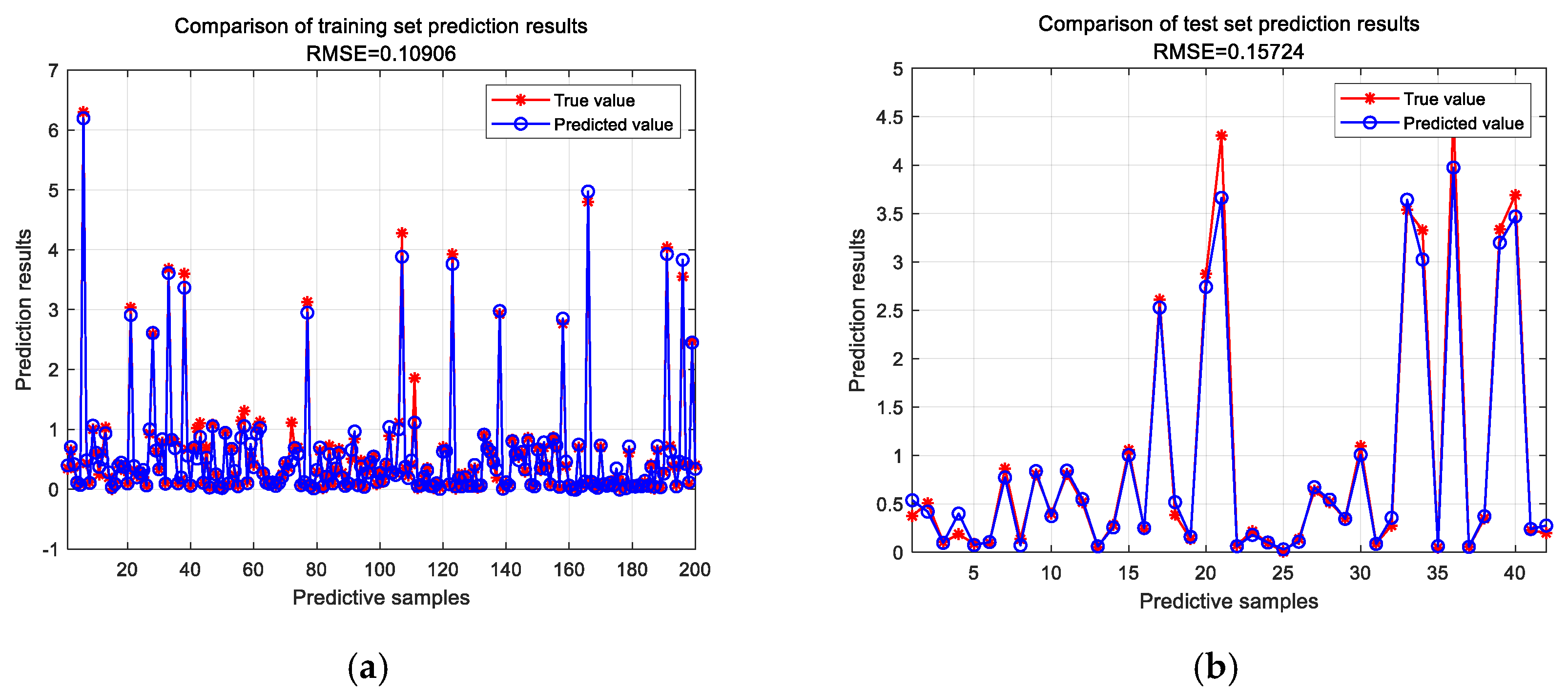

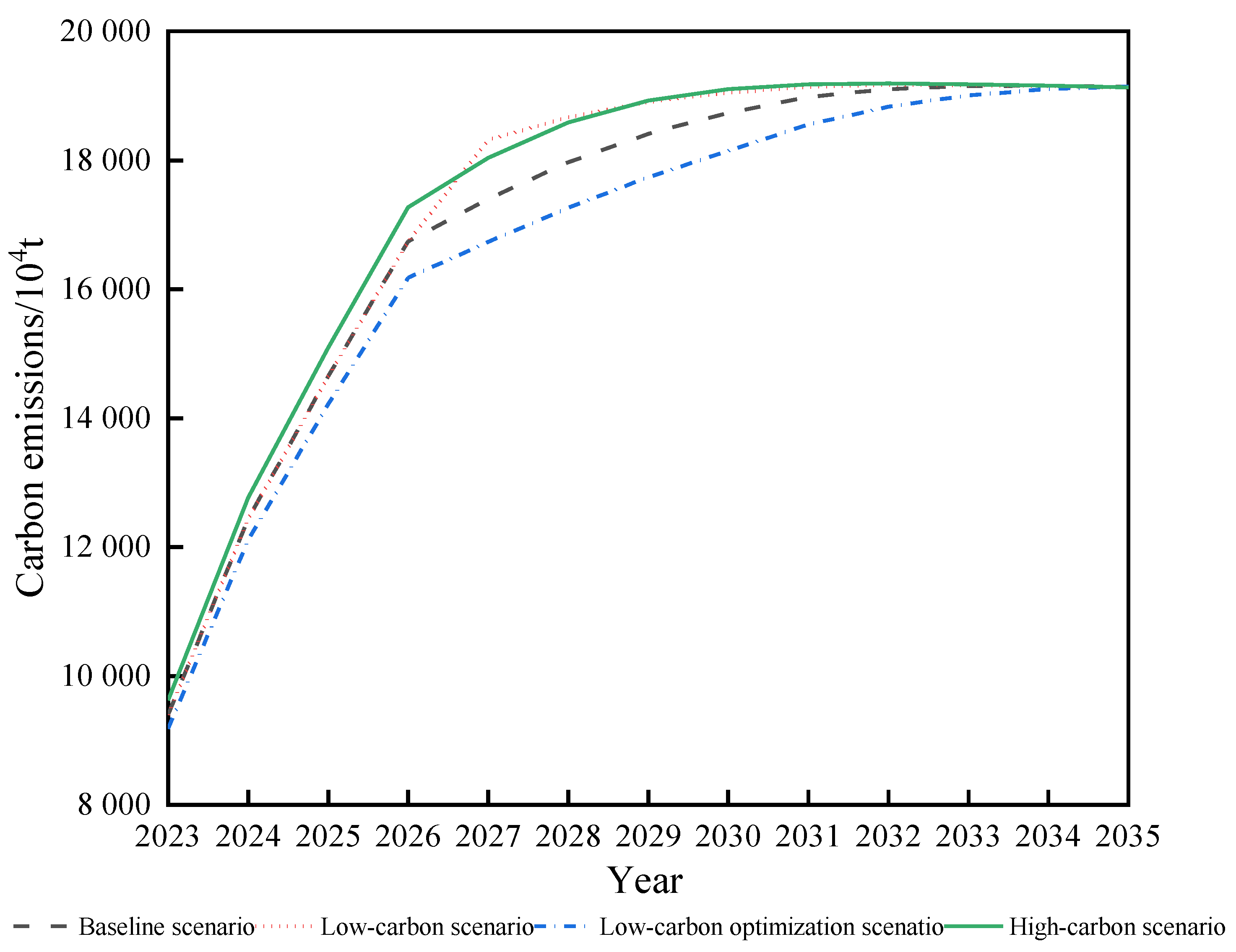
| Method | Computational Basis | Advantages | Drawbacks | Application Status | Sources |
|---|---|---|---|---|---|
| emission factor approach | Em = AD × IF where Em is GHG carbon emissions; AD is activity data; IF is emission factor. | Simple, clear and easy to understand, practical Karma, with lots of references. | Emission factors are more geographically specific and have greater uncertainty | Widely used and authoritative, carbon accounting for design energy consumption can be used. | [7] |
| mass balance method | ∑G0 = ∑G1 + ∑G2 where G0 is the input volume, G1 is the output volume; and G2 is the product loss volume. | Can accurately reflect actual local emissions and capture differences between facilities and equipment | Results are limited by the accuracy of the measurement equipment; statistical errors exist; workload is heavy and data requirements are numerous | Can be used to check the accuracy of the results of other methods, mostly applied to accounting for emissions from industrial processes. | [8,9] |
| practical measurement method | G = KQC where G is the emission of a gas; Q is the medium flow rate; C is the concentration of a gas in the medium; and K is the unit conversion factor. | More precise results | High cost, hard to obtain data, representativeness worth considering | It should be used for carbon emission sources that are relatively narrow in scope, simple production emission chains, and natural emission sources that have the ability to obtain primary monitoring data, such as land-use change and forests. | [10] |
| Remote-sensing data estimation | Remote-sensing light data to extract light values for fitting | Objective calculations, simple and clear data sources | The raw image data have errors that need to be corrected for use | Applied to reflect studies related to human activities as a basis for spatial and temporal distribution studies. | [11,12,13,14] |
| Method | Vantage | Drawbacks | Application Status | Sources |
|---|---|---|---|---|
| STIRPAT model | Panel data are better at overcoming the effects of abrupt structural changes in time-series models, and enlarging the sample size improves the validity of the estimates. | Inability to analyze indirect factors | Multiple use as a basis for application in combination with other influencing factor methods | [15,16] |
| LMDI model | Flexible processing; low data requirements, simple and clear, effectively solving the residual problem in the decomposition and the problem of 0 and negative values in the data | Indirect factors and technology effects cannot be analyzed; only direct factors can be studied. | It is widely used, mostly for energy structure and efficiency analysis. | [18,19,20] |
| Gray ForecastingModel | Efficient calculation results, friendly for less data | Cannot analyze data with high complexity and uncertainty, not applicable to analyzing long-term forecasts; high data requirements. | Research applied to predicting short- and medium- to long-term trends with small amounts of data. | [21] |
| ARIMA model | Suitable for dealing with time series with trends and those that are non-stationarity; strong applicability to many types of time series | Model selection is complex and requires repeated trials; for the presence of seasonal time series that capture incomplete features | Mostly applied to time-series data containing trends | [24,25] |
| GA-BP models | Strong parallel processing capability and robustness to compensate for the lack of local optimal solutions | High data requirements; long training time | It can be applied to a variety of nonlinear, chaotic, and dynamically changing time-series forecasting problems. | [26,27,28] |
| Variable | Variant | Account For | Unit | Data Description | Sources |
|---|---|---|---|---|---|
| population size effect | Number of resident population/X1 | Year-end resident population | every ten thousand people | Year-end resident population | [30,31,32,33,34] |
| Population density/X2 | Number of people per unit of land area | persons per square kilometer | Resident population/land area at the end of the year | ||
| economic scale effect | GDP/X3 | gross domestic product (GDP) | billions | GDP | [30,33,34,35,36] |
| Value added of tertiary sector/X4 | Value created in the production process of the tertiary sector | billions | Value added of tertiary industry | ||
| energy intensity effect | Energy intensity/X5 | Energy intensity of comprehensive energy output value of industrial enterprises above scale | ten thousand yuan per tons of standard coal | Energy consumption/GDP | [30,32,34,35,36,37,38] |
| Typology | Specific Indicators | Source |
|---|---|---|
| spatial data (.shp file) | Provincial and municipal administrative divisions, counties and districts in China | Department of Natural Resources Geographic Information Management, People’s Republic of China |
| DMSP/OLS nighttime stabilized light data, NPP/VIIRS monthly average light emission data | National Oceanic and Atmospheric Administration’s National Centers for Environmental Information (NCEI), related scholars [42,43,44] | |
| Non-spatial data (excel file) | Population, population density | Dalian City Statistical Yearbook 2001–2022, Dalian City Demographic Yearbook 2001–2022 |
| GDP, tertiary value added | Dalian City Statistical Yearbook 2001–2022 | |
| energy consumption | Dalian Statistical Yearbook 2001–2022, related scholars [45] |
| Type of Energy | Carbon Emission Factor Coefficient (Tonnes CO2/Tonne) | Carbon Oxidation Rate (%) |
|---|---|---|
| raw coal | 1.981 | 0.97 |
| Other coal washing | 0.955 | 0.99 |
| coke (processed coal used in blast furnace) | 2.860 | 0.928 |
| crude oil | 3.020 | 0.98 |
| petrol | 2.925 | 0.98 |
| diesel | 3.033 | 0.98 |
| diesel oil | 3.096 | 0.982 |
| fuel oil | 3.170 | 0.985 |
| liquefied petroleum gas | 3.101 | 0.989 |
| Fitting Coefficient k | The Goodness-of-Fit R2 | The Adjusted Goodness-of-Fit R2 | Significance Level P |
|---|---|---|---|
| 0.030 | 0.983 | 0.982 | 0.000 |
| Variant | Coefficient of Elasticity | Standard Error | t-Test Value | Significance Level | Admissibility Factor | Adjustment of the Adjustability Factor | F-Test Value |
|---|---|---|---|---|---|---|---|
| LnX1 | 0.362 | 0.029 | 12.457 | 0.000 *** | 0.931 | 0.930 | 639.458 (0.000 ***) |
| LnX2 | 0.173 | 0.022 | 8.034 | 0.000 *** | |||
| LnX3 | 0.417 | 0.022 | 19.386 | 0.000 *** | |||
| LnX4 | 0.820 | 0.033 | 25.208 | 0.000 *** | |||
| LnX5 | −0.180 | 0.015 | −11.602 | 0.000 *** | |||
| constant | −1.102 | 0.238 | −4.629 | 0.000 *** |
| Parameters and Year | Upper Value | Upper Quartile | Low Value | Setting Basis | |
|---|---|---|---|---|---|
| Demographic | 2023–2026 | 2.89 | 2.59 | 2.29 | The Population Planning of Dalian City (2021–2030) predicts that “the population will reach 7.45 million in 2025 and 8.3 million in 2030”, and The New Characteristics and Trends of China’s Population Development predicts that “the total population will reach its peak in 2025–2030 and there will be a negative population growth”. |
| 2027–2030 | 1.30 | 0.99 | 0.70 | ||
| 2031–2035 | 0.80 | 0.50 | 0.20 | ||
| Population density | 2023–2026 | −0.30 | −0.40 | −0.50 | Statistics show that the average annual growth rate of population density in Dalian over the past two decades has been 0.40%. Nevertheless, slight changes in the administrative region’s land area have contributed to a declining population trend in Dalian, resulting in an anticipated decrease in the population density indicator. |
| 2027–2030 | −0.50 | −0.60 | −0.70 | ||
| 2031–2035 | −0.70 | −0.80 | −0.90 | ||
| GDP | 2023–2026 | 15.20 | 14.20 | 13.20 | The Outline of the Fourteenth Five-Year Plan for the National Economic and Social Development of Dalian City and the Vision for 2035 emphasizes that “GDP should achieve an average annual growth rate of more than 6% by 2025”, and The Action Program for The Revitalization and Development of Dalian City, “Ten New Breakthroughs and Three Years of Exceeding a Trillion” stipulates that “GDP should achieve an average annual growth rate of more than 6% by 2025”. |
| 2027–2030 | 7.00 | 6.00 | 5.00 | ||
| 2031–2035 | 7.50 | 6.50 | 5.50 | ||
| Tertiary value added | 2023–2026 | 6.06 | 5.76 | 5.46 | Statistical data indicate that the average annual growth rate of the added value of Dalian’s tertiary industry over the past two decades was 5.76%. |
| 2027–2030 | 3.05 | 3.75 | 3.45 | ||
| 2031–2035 | 3.55 | 3.25 | 2.95 | ||
| Energy intensity | 2023–2026 | −4.51 | −4.71 | −4.91 | The Outline of the 14th Five-Year Plan emphasizes that “energy consumption per unit of GDP will be reduced by 13%, and energy intensity is expected to be reduced by 30% by 2030 as compared to 2020”, and The Outline of the 14th Five-Year Plan for the National Economic and Social Development of the City of Dalian and the Vision for 2035 stipulates that “energy consumption per unit of GDP will be reduced by 2035 and complete the target set by the State (a cumulative reduction of 13.5%)”. |
| 2027–2030 | −6.51 | −6.71 | −6.91 | ||
| 2031–2035 | −6.81 | −7.01 | −7.21 | ||
| Sight | P | PD | GDP | THIRD | EI |
|---|---|---|---|---|---|
| High-carbon scenario | Upper value | Upper value | Upper value | Upper value | Median quartile |
| Baseline scenario | Median quartile | Median quartile | Median quartile | Median quartile | Median quartile |
| Low-carbon scenarios | Median quartile | Median quartile | Median quartile | Median quartile | Median quartile |
| Low-carbon optimization scenarios | Low value | Low value | Low value | Low value | Upper value |
Disclaimer/Publisher’s Note: The statements, opinions and data contained in all publications are solely those of the individual author(s) and contributor(s) and not of MDPI and/or the editor(s). MDPI and/or the editor(s) disclaim responsibility for any injury to people or property resulting from any ideas, methods, instructions or products referred to in the content. |
© 2024 by the authors. Licensee MDPI, Basel, Switzerland. This article is an open access article distributed under the terms and conditions of the Creative Commons Attribution (CC BY) license (https://creativecommons.org/licenses/by/4.0/).
Share and Cite
Zheng, L.; Sun, Y.; Yu, Y. Carbon Peak Control Strategies and Pathway Selection in Dalian City: A Hybrid Approach with STIRPAT and GA-BP Neural Networks. Sustainability 2024, 16, 8657. https://doi.org/10.3390/su16198657
Zheng L, Sun Y, Yu Y. Carbon Peak Control Strategies and Pathway Selection in Dalian City: A Hybrid Approach with STIRPAT and GA-BP Neural Networks. Sustainability. 2024; 16(19):8657. https://doi.org/10.3390/su16198657
Chicago/Turabian StyleZheng, Linghui, Yanli Sun, and Yang Yu. 2024. "Carbon Peak Control Strategies and Pathway Selection in Dalian City: A Hybrid Approach with STIRPAT and GA-BP Neural Networks" Sustainability 16, no. 19: 8657. https://doi.org/10.3390/su16198657





